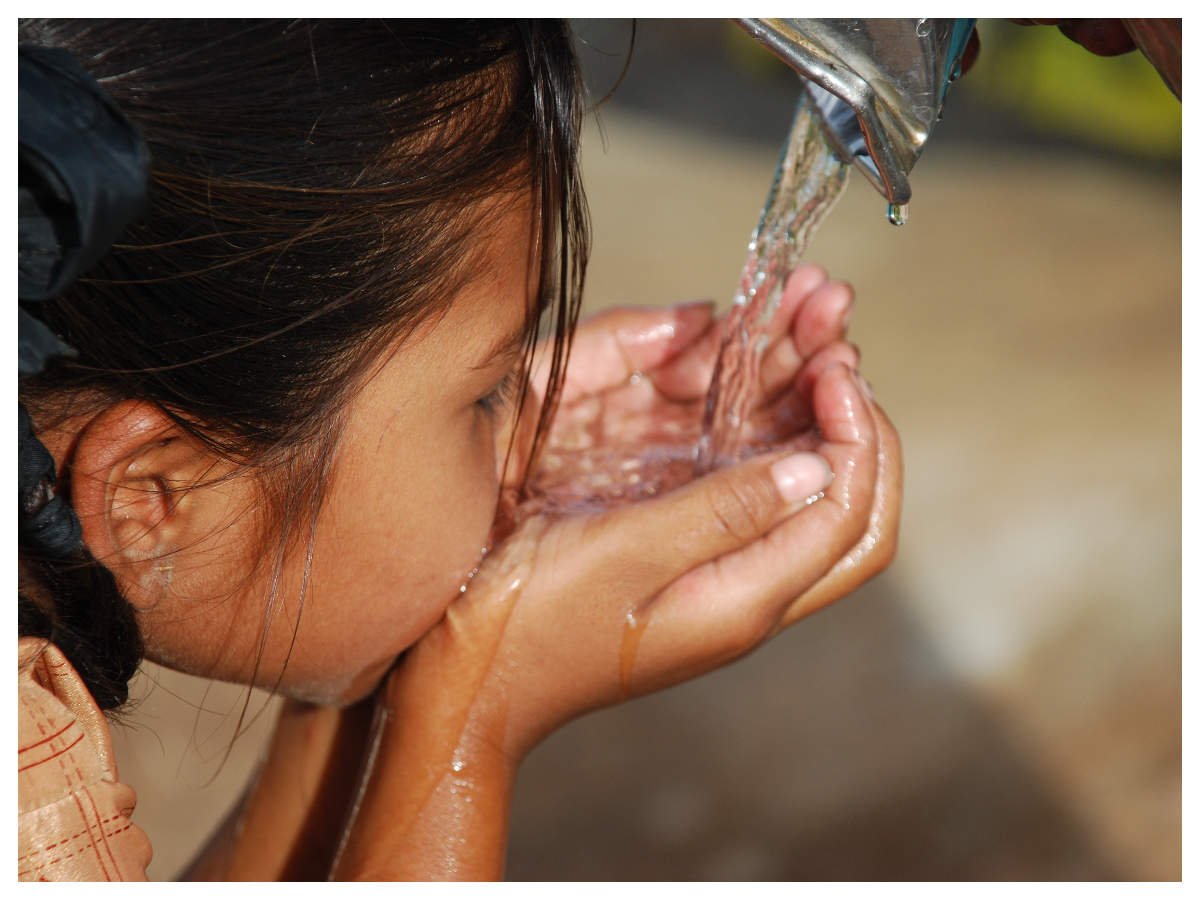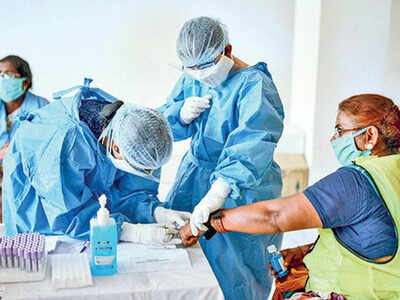
PUNE: As many as 6,053 of the 9,537 Covid-19 patients in the Pune Metropolitan Region (PMR) have been discharged so far from care centres. This number, recorded until June 7, brings the region’s recovery rate to 63.46%. The national average is 48.19%.
The PMR’s recovery rate is a massive improvement from what it was registering in early May. Experts said the new rate is mostly because of the new patient discharge policy, early detection and faster contact tracing. The new policy that came into effect on May 9 states that asymptomatic people and those with mild symptoms can be discharged and exempted from a second Covid-19 test.
The total number of positive cases in the region recorded until Monday (June 7) was 9,537. The virus has claimed 415 lives — nearly 4.35% of the total positive cases — in the PMR. Currently, there are 3,069 active cases (patients undergoing treatment) in the region.
“It’s the new discharge policy that has accelerated the recovery rate. But there is no denying the fact that contact tracing has also become faster and smoother,” said senior public health expert Subhash Salunke, technical advisor to the state government on Covid-19 containment.
“These faster processes are helping positive patients find early treatment. And early treatment means faster recovery,” Salunke said.
Earlier, the rules stated Covid-19 patients can only be released if their swab results tested negative twice in two consecutive analyses. But as per the new rule released on May 9, mild to very mild and pre-symptomatic patients are being discharged without any test.
Salunke said, “In Maharashtra, Nagpur has the highest recovery rate of 75%. Mumbai, with 46%, is among the cities with the lowest rate.”
Ayush Prasad, chief executive officer (CEO) of the Pune zilla parishad, said, “Pune has been detecting Covid-19 cases early. The best treatment protocols are now in place and doctors are constantly learning new techniques. We have to ensure people are getting better soon.”
Experts, meanwhile, said the entire exercise of analysing different values — mortality as well as recovery — still does not portray a clear picture. They reasoned that these analyses only take into account crude data vis-a-vis the number of cases detected daily, as against the number of people tested.
Senior epidemiologist Amitav Banerjee said, “For correct analysis of recovery rate, one has to follow the course of each patient infected with the virus until he or she recovers or dies. The actual denominator while calculating the death rate should be the total number of people infected.”
Banerjee said, “The calculation methods underestimate the true recovery rate as we are calculating the fatality rate based on denominators (total cases) provided by hospitals and from detections reported through contact tracing and other screening methods. For further refinement of the base number of total cases, administrations should also include results from sero-surveys being carried out by the Indian Council of Medical Research.”
The ICMR in May had asked states to conduct the sero-surveys — blood-based diagnostic tests — to measure the coronavirus exposure in varied sections of the population to track any wider spread of the disease for both prevention and treatment. Researchers said the tests can be carried out in key populations that include vendors and owners as well as staff working in grocery shops, pharmacists, restaurant staff, employees of banks, postal offices, couriers and telecom offices and air travel staff. The results of these surveys will be announced soon.
The PMR’s recovery rate is a massive improvement from what it was registering in early May. Experts said the new rate is mostly because of the new patient discharge policy, early detection and faster contact tracing. The new policy that came into effect on May 9 states that asymptomatic people and those with mild symptoms can be discharged and exempted from a second Covid-19 test.
The total number of positive cases in the region recorded until Monday (June 7) was 9,537. The virus has claimed 415 lives — nearly 4.35% of the total positive cases — in the PMR. Currently, there are 3,069 active cases (patients undergoing treatment) in the region.
“It’s the new discharge policy that has accelerated the recovery rate. But there is no denying the fact that contact tracing has also become faster and smoother,” said senior public health expert Subhash Salunke, technical advisor to the state government on Covid-19 containment.
“These faster processes are helping positive patients find early treatment. And early treatment means faster recovery,” Salunke said.
Earlier, the rules stated Covid-19 patients can only be released if their swab results tested negative twice in two consecutive analyses. But as per the new rule released on May 9, mild to very mild and pre-symptomatic patients are being discharged without any test.
Salunke said, “In Maharashtra, Nagpur has the highest recovery rate of 75%. Mumbai, with 46%, is among the cities with the lowest rate.”
Ayush Prasad, chief executive officer (CEO) of the Pune zilla parishad, said, “Pune has been detecting Covid-19 cases early. The best treatment protocols are now in place and doctors are constantly learning new techniques. We have to ensure people are getting better soon.”
Experts, meanwhile, said the entire exercise of analysing different values — mortality as well as recovery — still does not portray a clear picture. They reasoned that these analyses only take into account crude data vis-a-vis the number of cases detected daily, as against the number of people tested.
Senior epidemiologist Amitav Banerjee said, “For correct analysis of recovery rate, one has to follow the course of each patient infected with the virus until he or she recovers or dies. The actual denominator while calculating the death rate should be the total number of people infected.”
Banerjee said, “The calculation methods underestimate the true recovery rate as we are calculating the fatality rate based on denominators (total cases) provided by hospitals and from detections reported through contact tracing and other screening methods. For further refinement of the base number of total cases, administrations should also include results from sero-surveys being carried out by the Indian Council of Medical Research.”
The ICMR in May had asked states to conduct the sero-surveys — blood-based diagnostic tests — to measure the coronavirus exposure in varied sections of the population to track any wider spread of the disease for both prevention and treatment. Researchers said the tests can be carried out in key populations that include vendors and owners as well as staff working in grocery shops, pharmacists, restaurant staff, employees of banks, postal offices, couriers and telecom offices and air travel staff. The results of these surveys will be announced soon.

Coronavirus outbreak
Trending Topics
LATEST VIDEOS
City
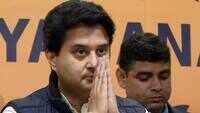 Jyotiraditya Scindia and his mother test positive for Covid-19, admitted to Delhi hospital
Jyotiraditya Scindia and his mother test positive for Covid-19, admitted to Delhi hospital  Umar Khalid's aide Khalid Saifi taken under police custody for his role in Delhi anti-Hindu riots
Umar Khalid's aide Khalid Saifi taken under police custody for his role in Delhi anti-Hindu riots 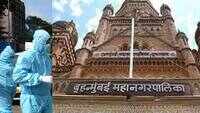 Mumbai: 55-year-old senior BMC officer dies of Covid-19
Mumbai: 55-year-old senior BMC officer dies of Covid-19 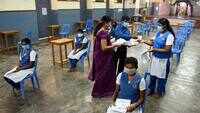 All students to be promoted, Tamil Nadu Class 10 board exams cancelled
All students to be promoted, Tamil Nadu Class 10 board exams cancelled
More from TOI
Navbharat Times
Featured Today in Travel
Quick Links
Kerala Coronavirus Helpline NumberHaryana Coronavirus Helpline NumberUP Coronavirus Helpline NumberBareilly NewsBhopal NewsCoronavirus in DelhiCoronavirus in HyderabadCoronavirus in IndiaCoronavirus symptomsCoronavirusRajasthan Coronavirus Helpline NumberAditya ThackerayShiv SenaFire in MumbaiAP Coronavirus Helpline NumberArvind KejriwalJammu Kashmir Coronavirus Helpline NumberSrinagar encounter
Get the app


